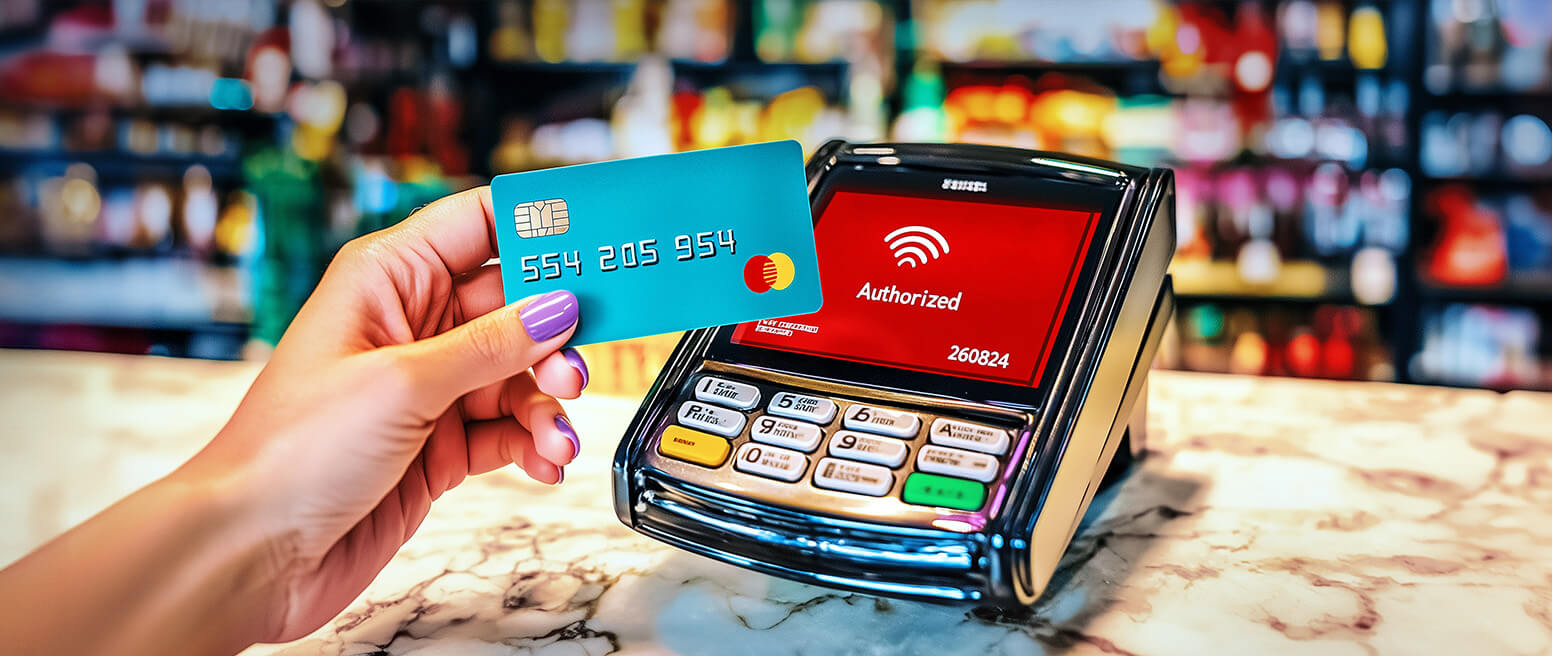Store Now, Bill Later: How Card-on-File Transactions Benefit Both Merchants & Cardholders
Whether it’s free shipping, expanded purchase options, or 24/7 customer service, more and more shoppers have come to expect perks that would’ve been unthinkable even a decade ago. Consumers have developed an “on demand” mentality that’s come to shape their expectations of merchants.
This can pose some problems. Many merchants have had to make radical changes to their policies just to stay competitive. Not all these changes demanded radical shifts in thinking, though. Sometimes, it’s as simple as hanging onto a few lines of cardholder information.
Offering “card-on-file” transactions typically requires minimal investment. However, it can start delivering substantial return on investment almost immediately.
In this post, we look at what card-on-file transactions are, and explore some of their advantages and challenges. We’ll see why it’s an increasingly popular option for paying online or even in-store, and also, how to manage this practice properly.
Recommended reading
- What Are Transaction IDs? How They Help Stop Fraud
- Authorization Holds: What are They & Why Are They Used?
- Credit Card Decline Codes: The Complete List for 2025
- Credit Card Processing Fees: How to Lower Your Rate in 2025
- Credit Card Decline Rate: How to Calculate & Recover Sales
- Do You Know the Credit Card Authorization Codes?
What Are Card-on-File Transactions?
- Card-on-File Transaction
A card-on-file transaction is a transaction conducted using consumer pay payment information stored by the merchant and attached to a customer’s profile. That information can be used to conduct future purchases, with a streamlined process for the cardholder, or even no need for the cardholder’s direct involvement at all.
[noun]/kard • ôn • fīl • tran • zak • shn/
A card-on-file (CoF) transaction occurs when a merchant, with the cardholder’s informed consent, stores the customer’s payment information for future purchases. Cardholders who keep a card on file with a merchant won’t have to re-enter their payment details every time they are charged. This is particularly useful for subscriptions or recurring purchases; instead of having to contact the cardholder every billing cycle, the merchant simply charges the card on file.
Merchants can obtain a customer’s permission to keep a card on file during the initial purchase, which can either occur online or at a physical point-of-sale. Upon receiving a customer’s consent, the merchant will outline terms, like the amount the cardholder will be charged, how often they will be charged, and what goods or services the payment will apply to.
The merchant will also have to run a zero-dollar transaction to verify that the card is valid. Alternatively, the customer can be asked to make an initial purchase. Once in receipt of the customer’s card details, the merchant must store the information on file in accordance with the Payment Card Industry Data Security Standard (PCI-DSS) requirements to safeguard it from fraud and data breaches.

Why Would Merchants Store Customer Card Information?
There are many instances where it is beneficial to both the merchant and the customer to have billing done automatically. For example, streaming services, monthly “box” services, automatic bill pay, and SaaS subscriptions (Gmail, Microsoft Office, WhatsApp).
Card on file transactions benefit both cardholders and merchants. For starters, rather than having to contend with the hassle of repeatedly authorizing and re-authorizing payments, cardholders can simply “set it and forget it” with merchants they trust.
Merchants benefit too. Keeping customer card information on hand lets merchants charge cardholders automatically without constantly having to ask for permission. This can lead to more sales, enhance customer lifetime values, and can generally make it easier for merchants and cardholders to transact with one another.
Establishing a card-on-file policy can let merchants:
As briefly discussed above, card on file payments are particularly useful in facilitating recurring payments. Storing customer card information upfront allows merchants to subsequently bill cardholders in an automatic, quick, and friction-free manner. For example:
- Subscription-based streaming services like Netflix and Spotify can charge customers on a monthly basis until the customer cancels.
- Card-on-file payments allow app-based merchants like Duolingo, Tinder, or Calm to bill customers seamlessly and automatically.
- Hotels, car rental agencies, and event venues can use card-on-file payments to cover “no-shows,” damage fees, or ancillary charges like in-room dining, minibar use, or late checkout.
- Card-on-file enables eCommerce giants like Amazon or Target to implement one-click checkout services.
- Merchants who offer buy now pay later installment plans can leverage card-on-file transactions to ensure they get paid in full.
Finally, card-on-file information eliminates the need for repeated data entry, a process that can lead to errors like double-billing or missing charges. Given that 20% to 40% of chargebacks are filed in response to merchant billing errors, card-on-file transactions can even be thought of as a chargeback prevention tactic.
REAL-WORLD EXAMPLE
Say you operate a small pizzeria. You have customers that order delivery through your website on a regular basis. Typing in all that card information can be time-consuming; all those extra minutes spent keying-in information represent friction that might deter a customer. Not only that, but each time they key-in information, there’s a chance the buyer may make an error. This would result in a failed authorization request.
Instead, let’s say a customer can simply click a small box that says something like “Use this card for future orders.” This authorizes you to keep the card information on file. If everything checks out, all orders from then on can be paid for at the click of a button, eliminating errors and cutting down friction.
Who Initiates a Card-on-File Transaction?
Once all the permissions are in place, a transaction can be initiated by either the customer or the merchant.
Card-on-file transactions exist in two types and can either be initiated by the merchant or the cardholder.
Both require a previous purchase by the cardholder, at which time the merchant cached the card data in a secure location. And, before the merchant can actually use the card for a purchase, they must obtain the cardholder’s permission. This often involves the user signing a credit card authorization form, a document that gives the “OK” to charge their card on an ongoing basis.
Once all the permissions are in place, a transaction can be initiated by either the customer or the merchant:
Card-on-File Transactions: Benefits vs. Challenges
The main advantages of using card-on-file are the speed and convenience of the customer checkout experience: as we mentioned earlier, simple checkouts tend to increase customer loyalty and retention. A shopper who knows they can buy with a mouse click or finger tap has incentive to keep buying from the same merchant, especially if they haven’t established accounts with other vendors.
Other benefits include:
At the same time, there are a few challenges that we need to address as well. These include:
Keeping current with customer payment information is one of the benefits digital walletshave over conventional card purchases. With eWallets, Customers payment details are updated automatically, even if the card attached to the account expires. There’s also Visa Account Updater, which fulfills a similar function.
Best Practices for Card-on-File Payments
Merchants rely on customer trust when conducting card-on-file transactions. To that end, here are a few best practices that we recommend for merchants to both streamline their operations and also maintain their customers’ trust:
Card-on-file transactions are becoming more common all the time, and they offer a multitude of benefits for merchants and cardholders alike. Businesses that don’t offer this feature may be at a disadvantage compared to other merchants.
That said, CoF presents certain risks, such as a potential rise in chargeback activity. The experts at Chargebacks911® understand the importance of transparent, end-to-end prevention and resolution solutions. If you’d like to know more, call us today.
FAQs
What does card-on-file mean?
“Card-on-file” refers to an agreement that allows merchants to save payment details to a customer profile, then use that information for future purchases, with no need for the cardholder’s direct involvement at the time of purchase.
A card-on-file transaction is a transaction conducted using consumer pay payment information stored by the merchant and attached to a customer’s profile. That information can be used to conduct future purchases, with a streamlined process for the cardholder, or even no need for the cardholder’s direct involvement at all.
What are the benefits of card-on-file transactions?
Among other things, merchants benefit through keeping customers happy, reducing administration needs, and increasing retention. The advantages for consumers include speed and convenience.
What is an example of a card-on-file transaction?
Common examples include streaming services, club memberships, or regular delivery of items such as pre-made meals or pet supplies. CoF can also be used for “one-click” purchases.
Do merchants need permission to keep a credit card-on-file?
If a customer has purchased from a business, that merchant is legally allowed to store the cardholder’s payment information. However, there are limitations. The merchant is contractually obligated to protect personal information. Also, key data elements, such as the card security code, or CVV, cannot be stored.
The merchant also needs express permission to use the card information for future purchases.
Are card-on-file transactions safe?
Yes. When handled correctly, card-on-file is as safe as any other payment method.
Can a company charge a card on file?
Yes, provided the customer gives the company permission to keep their card information on file and charge their card without additional verification.
Is it illegal to keep a credit card on file?
No, it’s not illegal for a merchant to keep a customer’s card on file, provided the merchant obtained the customer’s explicit consent to do so. However, it is illegal for the merchant to store a cardholder’s payment information on file without their consent.
What are the requirements for a card on file?
To keep a card on file, a merchant must obtain permission from the cardholder, who must consent to their payment information being stored and subsequently charged without additional authorization.















